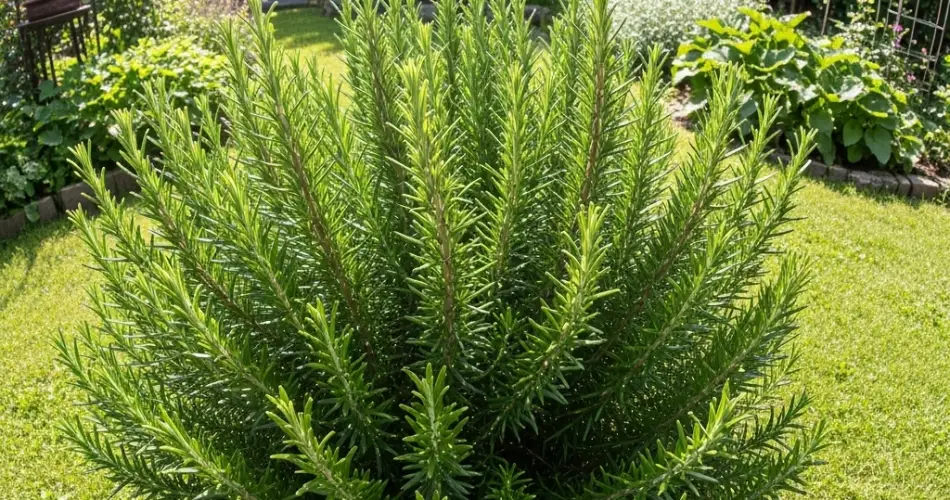If you’re looking to upgrade your garden without constant upkeep, rosemary may be the perfect solution. This tough, aromatic herb doesn’t just enhance your cooking—it also adds structure, texture, and year-round greenery to your outdoor space. Even better, it’s incredibly low-maintenance, making it ideal for beginners or anyone looking for a beautiful, stress-free garden addition.
Here’s how you can transform your garden with rosemary, step by step, with minimal effort.
Why Choose Rosemary?
Rosemary is an evergreen shrub native to the Mediterranean, which means it thrives in warm, sunny climates and requires little water once established. It’s perfect for dry or neglected corners of your yard, and it adds beauty with its needle-like leaves and soft blue or purple flowers. Plus, the fragrance is unmistakable—fresh, piney, and perfect for cooking or simply enjoying as you walk by.
Whether you’re planting directly in the ground, in pots, or as part of a herb garden, rosemary brings both beauty and function with almost no hassle.
1. Pick the Right Spot
Rosemary loves full sun. Choose a spot in your garden that gets at least 6 to 8 hours of direct sunlight every day. It will tolerate some shade, but poor sunlight will make the plant leggy and reduce both its fragrance and flavor.
Good drainage is also essential. Rosemary hates soggy roots, so avoid low spots where water tends to collect. If your garden soil is heavy clay or stays wet after rain, consider raised beds or large containers with proper drainage holes.
2. Choose the Right Variety
There are many types of rosemary, but most fall into two main categories:
-
Upright varieties: These grow tall and bushy, making them ideal as hedges or garden borders. ‘Tuscan Blue’ and ‘Arp’ are good examples.
-
Trailing varieties: These spill over the sides of containers or walls, adding a cascading effect. ‘Prostratus’ is a popular choice.
For an edible, ornamental, and easy-care option, start with a hardy upright variety suited to your climate.
3. Planting Made Simple
You can plant rosemary from seed, but it’s a slow and often unreliable process. For the least hassle, buy a small starter plant from a nursery or garden center.
If planting in the ground, dig a hole twice the width of the root ball and about the same depth. Mix in a bit of coarse sand or grit to improve drainage if your soil is dense. Backfill, press the soil gently around the roots, and water lightly.
For pots, use a container that’s at least 12 inches wide with drainage holes. Fill it with a cactus or Mediterranean herb mix, or make your own by combining potting soil with sand and perlite.
4. Watering and Feeding
Once established, rosemary is extremely drought-tolerant. Water deeply when the soil is completely dry, then let it dry out again before the next watering. Overwatering is one of the few ways you can harm this plant.
As for feeding, rosemary doesn’t need much. If growing in the ground, an annual compost mulch in spring is enough. For potted rosemary, use a diluted liquid fertilizer once a month during the growing season.
5. Prune to Shape and Stimulate Growth
Rosemary benefits from regular pruning, which helps it stay bushy and compact. After flowering, trim back any leggy or woody stems. You can also snip off sprigs throughout the year for cooking—this counts as light pruning and keeps the plant in good shape.
Avoid cutting into the old, woody part of the plant, as it may not regrow from there. Stick to the green, flexible growth.
6. Use it Creatively in the Garden
Rosemary isn’t just for herbs—it’s also a powerful design element in your garden. You can:
-
Create low hedges or garden borders
-
Line pathways with upright varieties for both scent and structure
-
Grow it in pots near patios or doorways for easy kitchen access
-
Combine with lavender, sage, or thyme for a Mediterranean-style bed
-
Let trailing rosemary spill over rock walls or raised garden edges
Its evergreen nature means you’ll have green color even in winter, and its flowers attract pollinators like bees and butterflies.
7. Trouble-Free Maintenance
Rosemary is naturally pest-resistant and rarely suffers from disease. Powdery mildew or root rot may appear in overly humid or wet conditions, but proper spacing and well-drained soil prevent most issues.
In colder climates (zones below 7), rosemary may not survive the winter outdoors. Either grow it in pots and bring it indoors, or choose a cold-hardy variety like ‘Arp’ and mulch heavily in fall.
Conclusion
Rosemary is one of the easiest and most rewarding plants you can grow. With minimal effort, it adds fragrance, beauty, and utility to your garden. Whether you’re designing a low-maintenance landscape, upgrading your herb garden, or simply filling an empty spot in the yard, rosemary delivers results with virtually zero hassle. Plant it once, care for it occasionally, and enjoy it for years.



